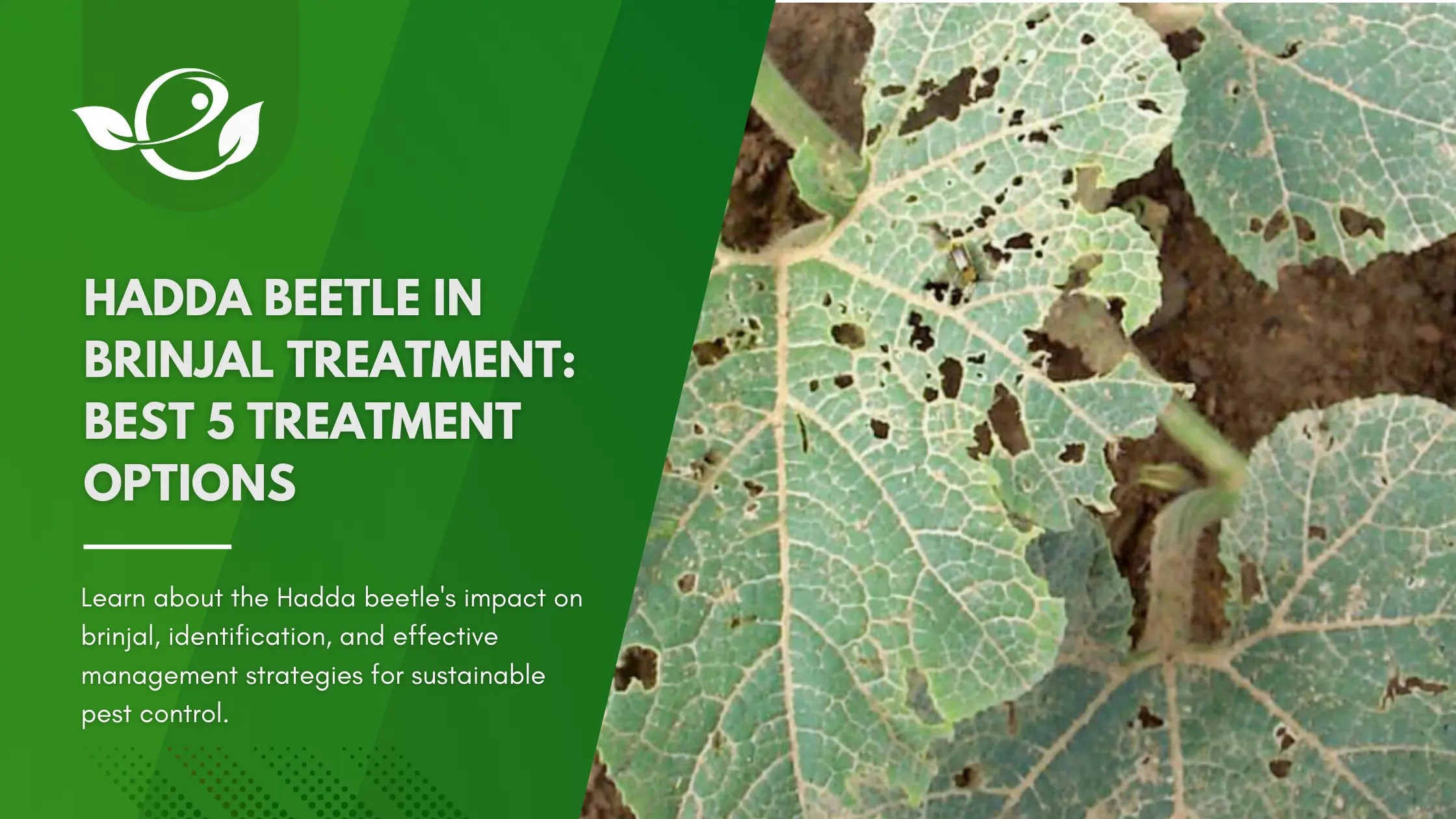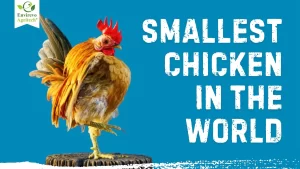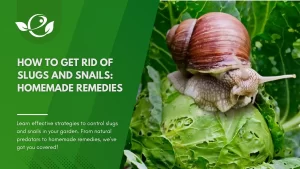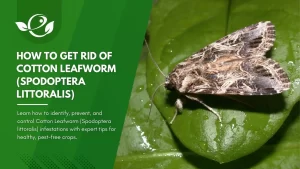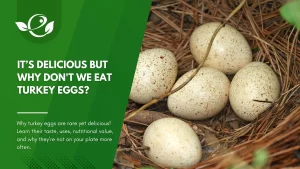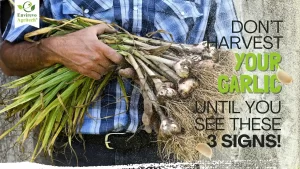Table of Contents
The Hadda beetle, also known as the 28-spotted ladybird beetle, is a notorious pest that can wreak havoc on brinjal (eggplant) crops. This pest is known for its voracious appetite, and an infestation can lead to significant losses in yield and quality. Given the economic importance of brinjal as a staple vegetable in many regions, it is crucial for farmers to manage Hadda beetle infestations effectively and efficiently.
In this comprehensive guide, we will explore the best five treatment options for managing Hadda beetle infestations in brinjal. These methods include cultural, biological, chemical, organic, and Mechanical and also integrated pest management (IPM) approaches. By understanding and implementing these strategies, farmers can protect their crops and ensure healthy, productive brinjal fields.
Understanding the Hadda Beetle
Description and Biology of the Hadda Beetle
The Hadda beetle, also known as the 28-spotted ladybird beetle, is a notorious pest in the Solanaceae family of plants, which includes brinjal, potatoes, and tomatoes.

Scientific Classification
- Scientific Name: Henosepilachna vigintioctopunctata
- Kingdom: Animalia
- Phylum: Arthropoda
- Class: Insecta
- Order: Coleoptera
- Family: Coccinellidae
- Genus: Henosepilachna
- Species: H. vigintioctopunctata
What caused it?
The adults are oval, dull orange with 28 black spots and short soft hairs on the back. The female beetle lays oval, yellow eggs (0.4-1 mm) upright and in small groups usually on the lower side of the leaves. After about 4 days, the pale yellow-whitish larvae with long, dark-tipped split spines on the backs hatch. The larvae grow to about 6 mm within about 18 days, depending on temperature. They then move to the underside of the leaves and pupate. After an additional 4 days, the new generation of adult beetles emerges from the cocoons. During the reproduction period (March-October), cooler temperatures favour lifecycle and population growth. The beetles can overwinter in the soil and piles of dry leaves.
Life Cycle
The Hadda beetle undergoes complete metamorphosis with four distinct stages: egg, larva, pupa, and adult.
- Egg: Females lay clusters of yellow eggs on the underside of leaves.
- Larva: Upon hatching, larvae feed voraciously on the foliage.
- Pupa: Larvae pupate on the plant surface, typically on the underside of leaves.
- Adult: Adults emerge from pupae and continue to feed and reproduce.
Can also be found in
Bitter Gourd, Cucumber, Brinjal, Melon, Potato, Pumpkin, Tomato, Zucchini
Habitat and Distribution
The Hadda beetle is predominantly found in tropical and subtropical regions. Its distribution includes parts of Asia, Africa, and Australia. It thrives in warm climates and is particularly active during the growing season of host plants.
Symptoms of Hadda Beetle
- Both adults and larvae feed on the leaves and can cause severe damage. Initial symptoms form as the feeding damage to the green tissue between the leaf veins.
- Later, a characteristic damage pattern called skeletonization occurs whereby only the hard parts of the leaves (main veins and petioles) are left.
- There may be shallow holes on fruit surfaces, too.
- They destroy the seedlings and stunt the growth of more mature plants. The pest can lead to heavy defoliation and high yield loss and is, therefore, one of the most dangerous eggplant pests.
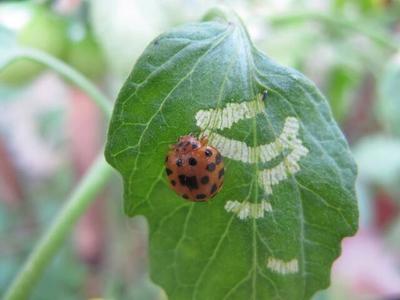
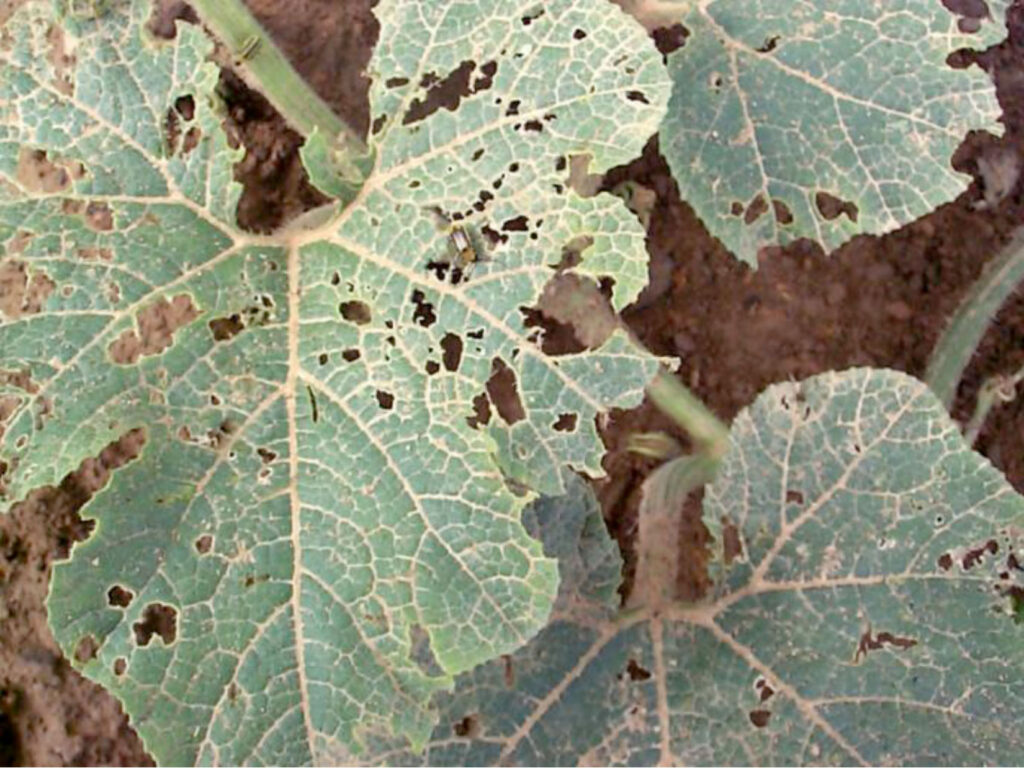
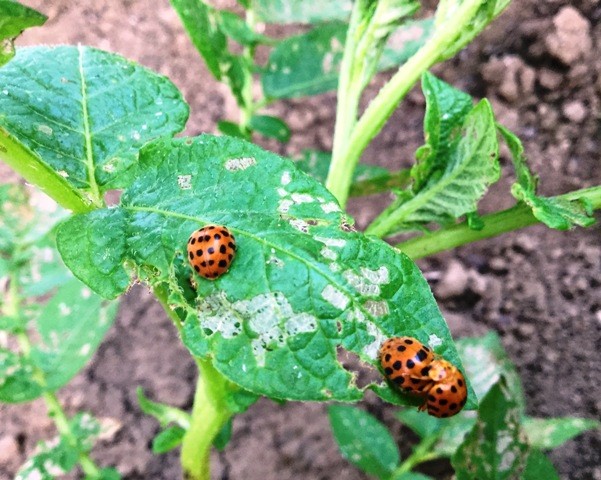
Preventive Measures
- Plant resistant varieties that are available in your area.
- Avoid planting eggplant in or next to infested fields.
- Remove or avoid planting alternative hosts in the vicinity of your field.
- Irrigate thoroughly to keep your plant healthy.
- Check your plants or field for any sign of the pest.
- Handpick and destroy larvae and adults found in the seedbeds or fields.
- Remove or destroy the infected plants and plant residues by burning them.
Cultural Control Methods
Crop Rotation
Crop rotation is a fundamental agricultural practice that involves growing different types of crops in the same area in sequential seasons. This technique helps disrupt the life cycle of pests, including the Hadda beetle, by depriving them of their preferred host plant.
- How It Works: Rotating crops can reduce the build-up of pest populations in the soil and on plant residues. For instance, alternating brinjal with non-host crops such as cereals or legumes can significantly lower Hadda beetle infestations.
- Examples: Suitable crop rotations for brinjal include planting maize, wheat, or beans in the off-season. These crops are less attractive to Hadda beetles, which helps break their reproductive cycle.
Intercropping
Intercropping involves growing two or more crops in close proximity. This method can enhance biodiversity and reduce pest problems by creating a less favorable environment for the Hadda beetle.
- Repellent Plants: Certain plants can repel Hadda beetles or mask the presence of brinjal. Examples include garlic, onion, and marigold. Intercropping brinjal with these plants can help deter beetles.
- Benefits: Besides pest control, intercropping can improve soil health, optimize space usage, and increase overall farm productivity.
Field Hygiene
Maintaining good field hygiene is essential for preventing and managing pest infestations. Proper sanitation practices can significantly reduce the presence of Hadda beetles in brinjal fields.
- Cleanliness: Regularly remove weeds, plant debris, and infested plant parts from the field. Weeds can serve as alternate hosts for Hadda beetles, and plant debris can harbor pest eggs and larvae.
- Monitoring: Conduct regular inspections to identify early signs of infestation. Early detection allows for prompt action, reducing the need for more drastic measures later.
Mechanical Control Methods
Handpicking
In small-scale operations, handpicking and destroying beetles and larvae can be an effective control method.
Physical Barriers
Use physical barriers such as nets or row covers to protect plants from beetle infestations. These barriers can prevent adult beetles from laying eggs on the plants.
Biological Control Methods
Natural Predators
Biological control involves using natural enemies of pests to reduce their populations. Beneficial insects, such as predators and parasitoids, can play a vital role in controlling Hadda beetle infestations.
- Ladybirds and Lacewings: Ladybirds (Coccinellidae) and lacewings (Chrysopidae) are natural predators of Hadda beetles. They feed on the eggs, larvae, and adults of the beetles, helping to keep their numbers in check.
- Attracting Beneficials: Planting nectar-rich flowers and providing habitat for these beneficial insects can enhance their presence in brinjal fields. Examples include planting dill, fennel, and yarrow.
Parasitoids
Parasitoids are insects that lay their eggs on or in the bodies of other insects, eventually killing the host. Several parasitoid species target Hadda beetles and can be effective in biological control.
- Trichogramma Wasps: These tiny wasps parasitize the eggs of Hadda beetles, preventing them from hatching. Releasing Trichogramma wasps in the field can reduce Hadda beetle populations.
- Sustaining Parasitoids: Ensure a continuous supply of host insects for parasitoids to maintain their populations. This can be achieved by planting a variety of crops and providing refuges.
Pathogens
Microbial pathogens, such as fungi, bacteria, and viruses, can infect and kill Hadda beetles. These pathogens can be applied as biopesticides, offering an environmentally friendly alternative to chemical insecticides.
- Beauveria bassiana: This entomopathogenic fungus infects and kills Hadda beetles. Commercial formulations of B. bassiana are available and can be applied to brinjal plants.
- Application: Follow manufacturer instructions for the correct application rate and timing. Ensure good coverage of the plant foliage to maximize the effectiveness of the biopesticide.
Chemical Control Methods
Chemical control involves the use of insecticides to kill Hadda beetles. While this method can be highly effective, it should be used judiciously to minimize adverse effects on the environment and non-target organisms.
Always consider an integrated approach with preventive measures and available biological treatments. Insecticides containing products, such as fenvalerate, and chlorpyriphos can be applied to the foliage, if needed.
- Effective Insecticides: Some commonly used insecticides for Hadda beetle control include carbaryl, deltamethrin, and imidacloprid. These chemicals can provide quick knockdown of beetle populations.
- Guidelines: Always follow label instructions regarding application rates, timing, and safety precautions. Rotate insecticides with different modes of action to prevent resistance development.
Safety Precautions: Using insecticides safely is crucial to protect human health and the environment. Adhering to safety protocols can prevent accidents and contamination.
- Personal Protective Equipment (PPE): Wear appropriate PPE, including gloves, masks, and protective clothing, when handling and applying insecticides.
- Environmental Protection: Avoid spraying near water sources and during windy conditions to prevent drift. Use buffer zones to protect sensitive areas.
Organic Control Methods
Parasitoid wasps of the Pediobius family can be used to control the pest. These wasps also attack beneficial ladybirds, so it is crucial to identify the pest carefully before using them. The pathogenic microorganism can also help to control the population of leaf-eating beetle. Biopesticides containing the bacterium Bacillus thuringiensis or the fungus Aspergillus spp. can be used as foliar spray applications. Leaf extracts of Ricinus communis (castor oil), Calotropis procera, and Datura innoxia can be foliar sprayed. Applying ash can effectively reduce the infestation in the early stages.
Neem Oil
Neem oil is a natural pesticide derived from the neem tree (Azadirachta indica). It has insecticidal properties and can be used to control Hadda beetles organically.
- Mode of Action: Neem oil disrupts the hormonal balance of insects, inhibiting feeding, growth, and reproduction. It can be used as a contact or systemic insecticide.
- Application: Prepare a neem oil solution by mixing 5-10 ml of neem oil with 1 liter of water and a few drops of liquid soap. Spray the solution on brinjal plants, ensuring thorough coverage.
Diatomaceous Earth
Diatomaceous earth (DE) is a natural substance made from fossilized remains of diatoms. It works by physically abrading and dehydrating insects, including Hadda beetles.
- How It Works: When insects come into contact with DE, the sharp edges of the particles damage their exoskeletons, causing them to dry out and die.
- Application Tips: Apply DE as a dust on the foliage of brinjal plants and around the base of the plants. Reapply after rain or heavy dew, as moisture reduces its effectiveness.
Homemade Remedies
Several homemade remedies can be used to control Hadda beetles. These remedies are easy to prepare and can be effective when used consistently.
- Garlic-Chili Spray: Crush 10 cloves of garlic and 5 hot chili peppers, then mix with 1 liter of water. Let the mixture sit overnight, strain, and add a few drops of liquid soap. Spray the solution on brinjal plants to repel Hadda beetles.
- Soap Spray: Mix 2 tablespoons of liquid soap with 1 liter of water. Spray the solution directly on Hadda beetles to kill them on contact. This method is most effective against adult beetles.
Integrated Pest Management (IPM)
Combination of Methods
Integrated Pest Management (IPM) is a holistic approach that combines multiple pest control methods to achieve effective and sustainable pest management.
- Holistic Approach: IPM integrates cultural, biological, chemical, and organic methods to create a comprehensive pest management strategy. This approach minimizes reliance on any single method and reduces the risk of resistance.
- Benefits: IPM enhances long-term pest control, reduces environmental impact, and promotes ecological balance.
Conclusion
In conclusion, managing Hadda beetle infestations in Brinjal requires a multifaceted approach. By implementing cultural, biological, chemical, organic, and integrated pest management methods, farmers can effectively control this pest and protect their crops. A combination of these strategies offers the best chance for sustainable and long-term pest control. Farmers are encouraged to assess their own brinjal fields and choose the appropriate treatment methods based on their specific conditions. Sharing experiences and staying informed about the latest pest management techniques can further enhance the effectiveness of these strategies.
For more information, consider exploring additional resources, attending workshops, and seeking advice from agricultural extension services. By working together and sharing knowledge, we can ensure healthy and productive brinjal crops for the future.
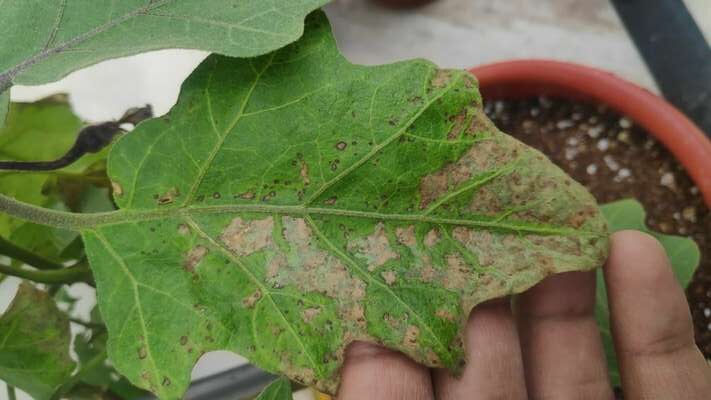
FAQ (Frequently Asked Questions)
What is the Scientific name of the Hadda beetle in brinjal?
The scientific name of the Hadda beetle in brinjal is Henosepilachna vigintioctopunctata.
What is the life cycle of a beetle?
The life cycle of a beetle consists of four distinct stages:
Egg: Females lay clusters of yellow eggs on the underside of leaves.
Larva: Upon hatching, larvae feed voraciously on the foliage and exhibit a spiny, yellowish appearance.
Pupa: The larvae pupate on the plant surface, typically on the underside of leaves, undergoing metamorphosis.
Adult: Adults emerge from pupae and continue the cycle by feeding and reproducing.
What is the leaf eater of brinjal?
The Hadda beetle (Henosepilachna vigintioctopunctata) is a common leaf eater of brinjal, causing significant damage by feeding on the leaves and sometimes the fruit.
What are the host plants of Hadda beetle?
The Hadda beetle primarily affects plants in the Solanaceae family, including:
Brinjal (eggplant), Potatoes, Tomatoes. It also affects plants in the Cucurbitaceae family, such as cucumbers.
What insecticide is used for Hadda beetle?
Various insecticides can be used to control Hadda beetle infestations, including:
Neem-based insecticides: Organic options that are effective against various pests.
Synthetic insecticides: Such as pyrethroids and neonicotinoids. It is important to follow label instructions and safety guidelines when using chemical insecticides.
Is soapy water a good insecticide?
Soapy water can be an effective homemade insecticide for soft-bodied insects such as aphids and mites. However, it may not be very effective against hard-bodied insects like the Hadda beetle.
What is homemade insecticide?
Homemade insecticides are DIY solutions made from readily available household ingredients. Common examples include:
1. Soapy water: A mixture of water and dish soap to kill soft-bodied insects.
2. Neem oil spray: A natural pesticide made from neem tree seeds.
3. Garlic and chili spray: A mixture of garlic, chili, and water to repel insects.
How to control Hadda beetle?
Controlling Hadda beetle involves a combination of methods:
1. Cultural control: Crop rotation, intercropping, and using resistant varieties.
2. Mechanical control: Handpicking beetles and larvae, using physical barriers like nets.
3. Biological control: Introducing natural predators and parasitoids, using biopesticides like Bacillus thuringiensis (Bt).
4. Chemical control: Judicious use of insecticides, following Integrated Pest Management (IPM) principles.
What are the natural enemies of the Hadda beetle?
Natural enemies of the Hadda beetle include:
1. Predatory insects: Such as ladybirds and spiders.
2. Parasitoids: Such as parasitoid wasps that lay eggs in or on the beetle larvae
What is the most powerful natural insecticide?
The most powerful natural insecticides vary depending on the target pest. Some effective natural insecticides include:
1. Neem oil: Effective against a wide range of pests due to its multiple modes of action.
2. Pyrethrin: Derived from chrysanthemum flowers, effective against many insects.
3. Diatomaceous earth: A natural powder that dehydrates and kills insects with exoskeletons.
